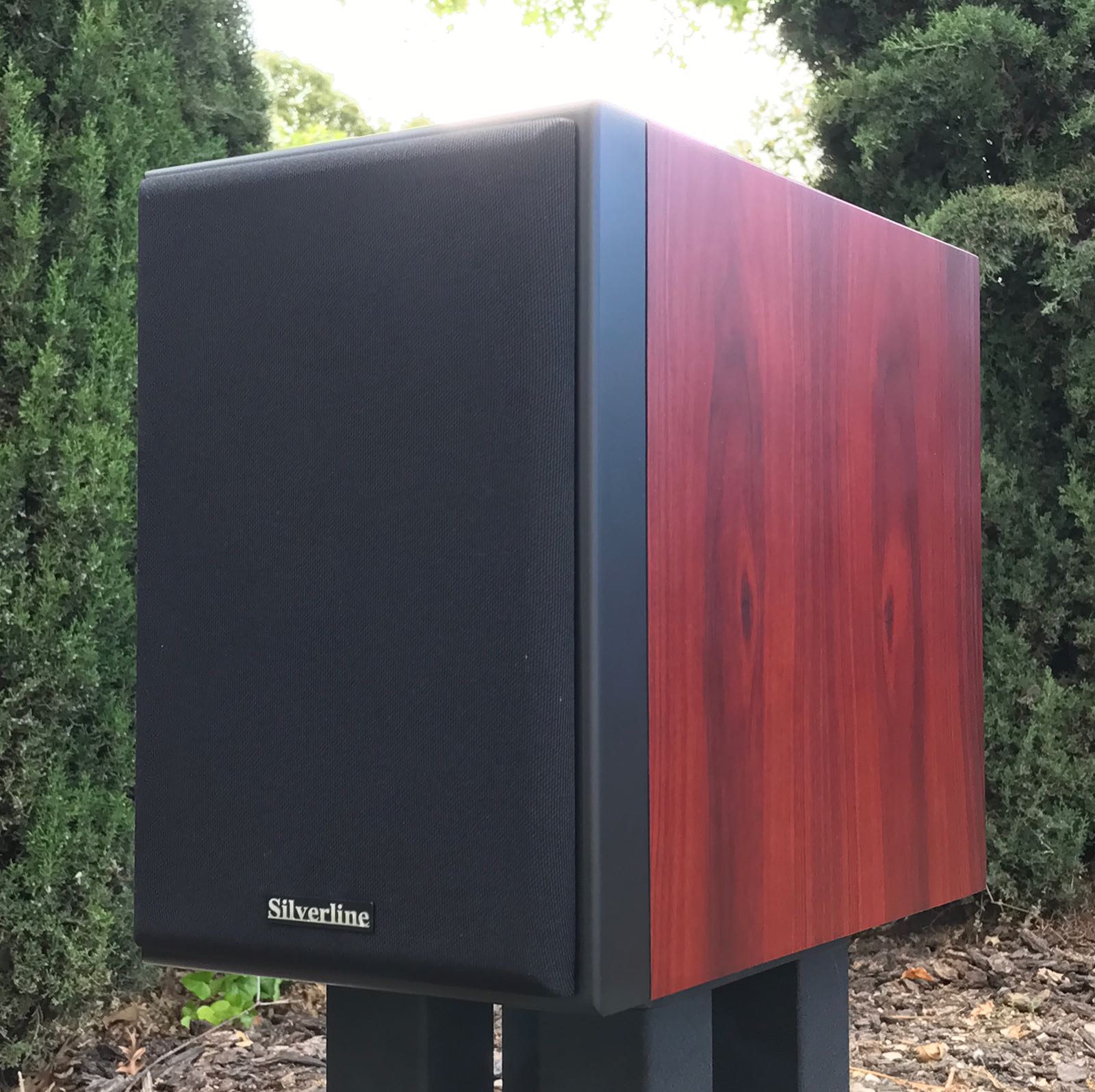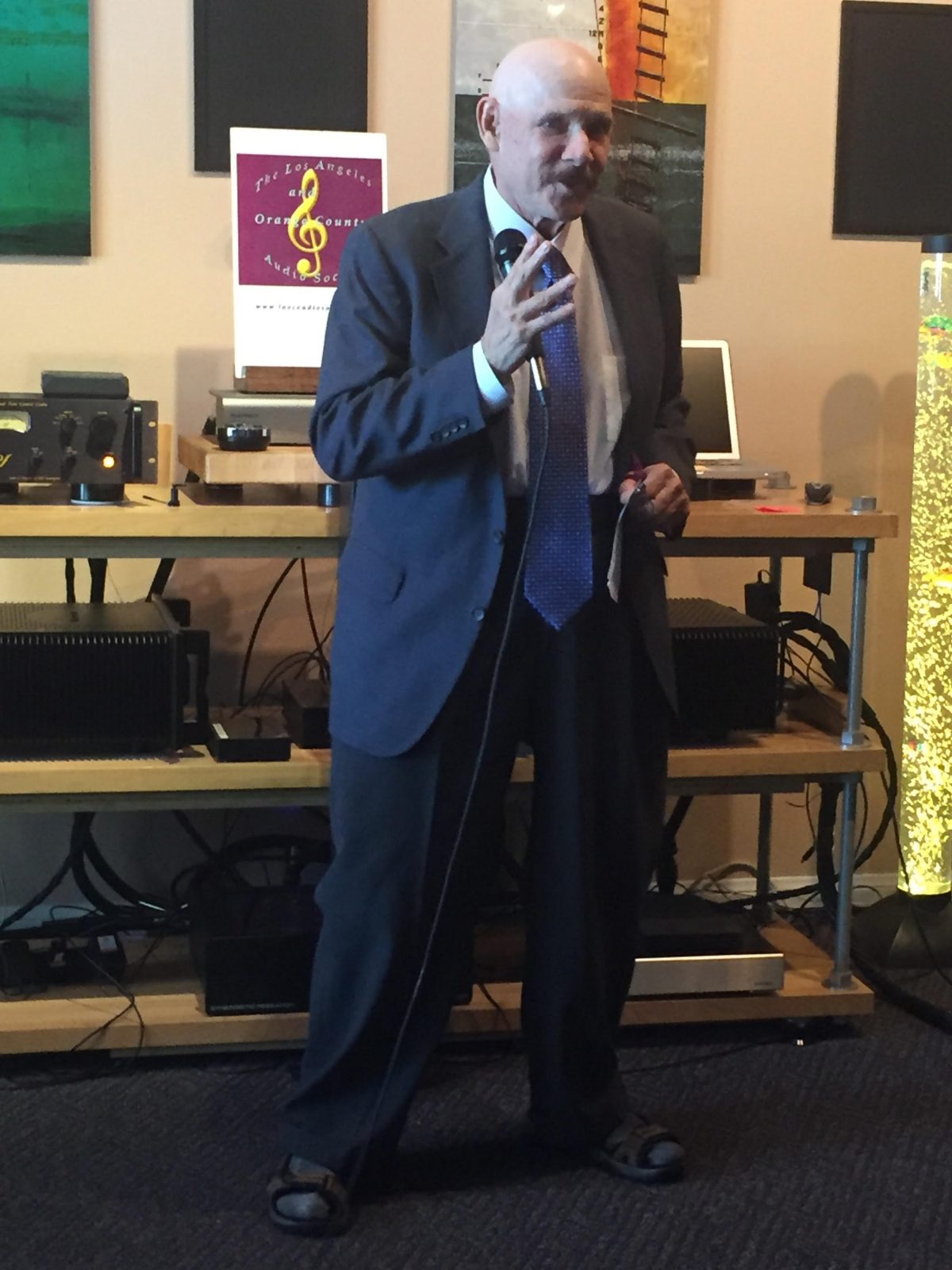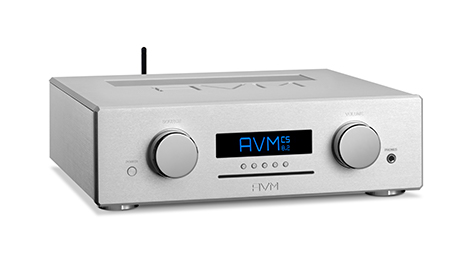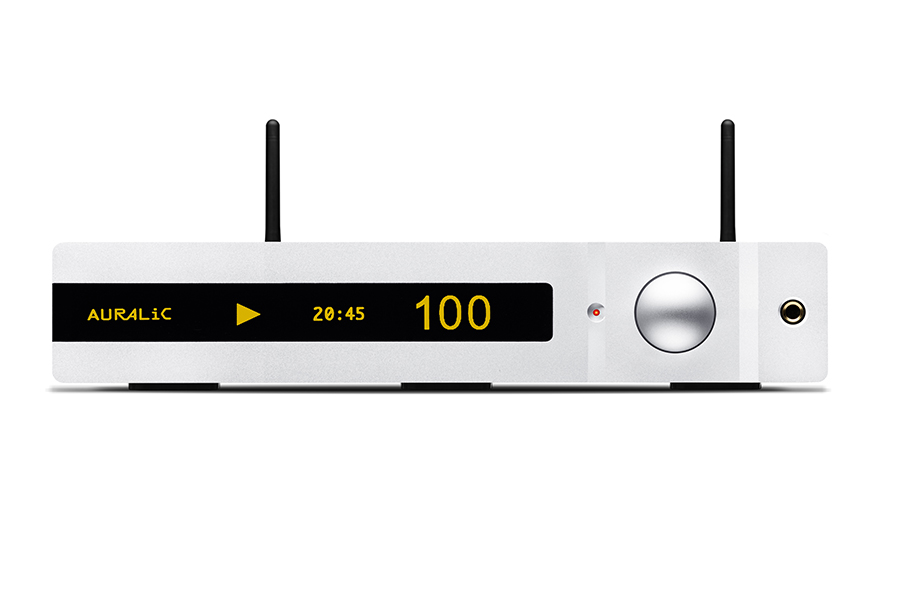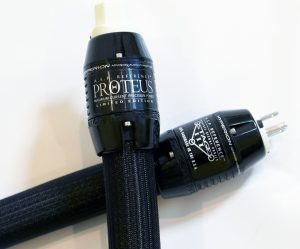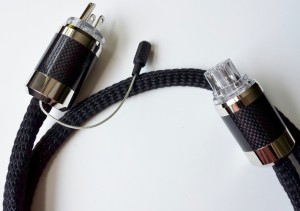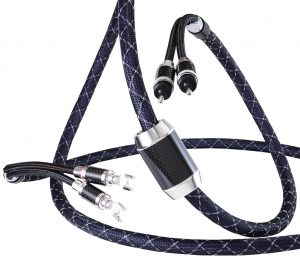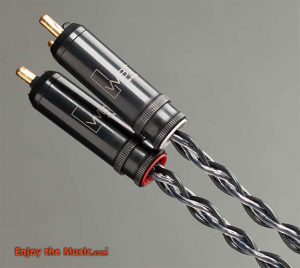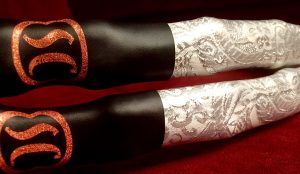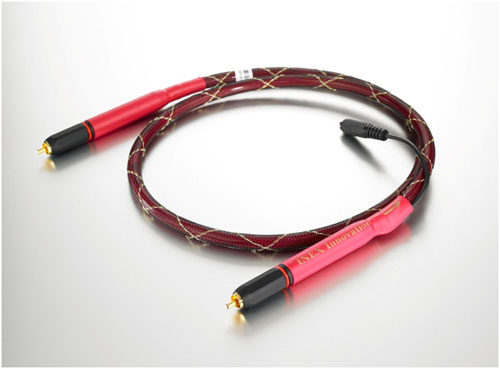
The era of photonic interconnect cables has arrived and we should all be singing praises! What do I mean?
I've written before about the photonic cables from Harmonic Technology/INEX Innovation that use photons instead of electrons to carry audio signals. This technology, fiber optics, has revolutionized the telephone, cable TV and telecommunications industries including the ubiquitous Internet, but has barely been tried for audio.
The folks at INEX Innovation, whose products are distributed by Harmonic Technology, have pioneered the use of photonics for audio and have steadily enhanced their technology over the past 10 years. Their latest Generation III cables that I have been listening to over the past couple of months are a revelation and a major step forward in audio cable technology. Why? Because they are about as good as it gets in doing what a cable should do. And that is absolutely nothing!
That's right. Most cables of a conventional nature either directly affect the sound of your system, allowing unwanted interference or electronic artifacts to enter the signal path, or they perturb the electronics on either end of the cable to distort what our components would ordinarily sound like. The INEX Innovation cables do none of these nefarious things. They merely get out of the way and allow your electronic components to sound the way the designer wanted them to sound. While it is true you can "tune" your system to sound better by using different electronic cables, what you are really doing is playing around to find a cable that allows your electronic components to sound as good as they really are. The better solution is to choose a cable that steps completely out of the way and allows you to hear through to your source components. I've yet to hear a conventional cable do this effectively (maybe I haven't spent enough money yet, but I have auditioned numerous cables that cost more than $1000/foot). The INEX Innovation cables under review do this readily, and while they are not cheap, they are in the middle range of the interconnect cable price scale—between $1000 and $2000 per pair (not per foot).
INEX sent me a combination of analog and digital cables to review. Many people believe that fiber optic cables only carry digital signals, and that is true for most of them. But not the INEX cables. Two out of the three INEX interconnect cables I will be talking about are completely analog in nature. The analog audio signal is used to directly modulate a CW optical carrier coming from a laser diode. The laser is embedded in the RCA connector on one end of the cable. A reverse process is used to recover the audio signal at the other end of the cable in the form of a photodiode that is embedded behind the connector once again. In between is very low loss glass optical fiber that is about the width of a human hair. The fiber is protected in a thick jacket to keep it from bending too much and to allow safe handling.
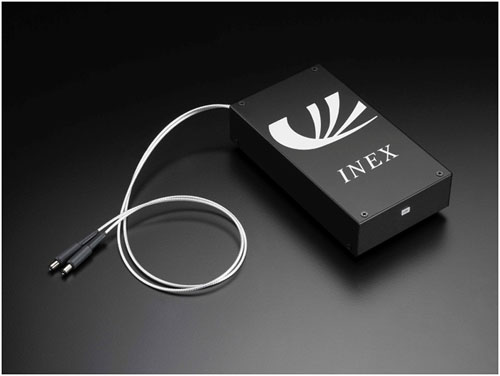
When Mitch Ko, Engineering Director at INEX Innovation, first approached me about reviewing their latest generation of cables, I decided that to give them their best shot I would insert the INEX cables everywhere in my system that I could. Much of what INEX has improved over the years is in managing noise and keeping it out of your audio system. Photonic cables are immune from problems that plague all electronic cables including RFI, EMI, static electricity, hum, microphony, etc. The only way noise gets into them is if it comes from the electronics they are connected to or via the power supplies necessary to properly bias the photonic components. I reasoned if my review system used a mixture of electronic and photonic cables then some noise artifacts could creep in via the electronic cables and negate some of the advantage of using photonics.
Now, INEX does not currently manufacture a speaker cable (they did at one time but that's a story for another article) so I had to retain my Kubala-Sosna Emotion speaker cables in my system. However, INEX was able to supply me with their Photon AMP III interconnects to go between my preamp and amp and their Photon Link IIII interconnect to go between my CD player/DAC and preamp. They also loaned me their Photon Digital III interconnect and the Photon USB 2 cable to interface by Mac Mini music server with the DAC. The Photon USB 2 cable has a Type 2 USB connector on one end that plugs into a USB output on your computer. The other end of this cable plugs into a small metal box that contains a processor with an XMOS processing chip that performs asynchronous USB to SPDIF conversion. The short 1.5m cable appears to be a conventional electronic cable. One then uses the Photon Digital III cable to go between this converter's SPDIF output and the SPDIF input on the DAC over fiber optics. This effectively isolates the noise and other artifacts coming from the computer from the DAC while transmitting the digital signal in a pristine way. Using fiber to carry digital signals is a sweet spot for fiber optics as that is the way most fiber optic links are used. The technology to do this right is well known and well implemented in the INEX Photon Digital III cable. It is my opinion that all digital audio signals should be carried on glass fiber (not the unfortunate TOSLINK technology however), although there are more ways to implement it than the approach taken by INEX with its in-line USB/SPDIF converter. The INEX link only supports PCM signals up to 24 bits/192 kHz, so the only way to listen to DSD is by using the DoP protocol for DSD over PCM. There is no technological reason preventing the optical link from carrying direct DSD signals so I am hopeful of seeing this someday soon.
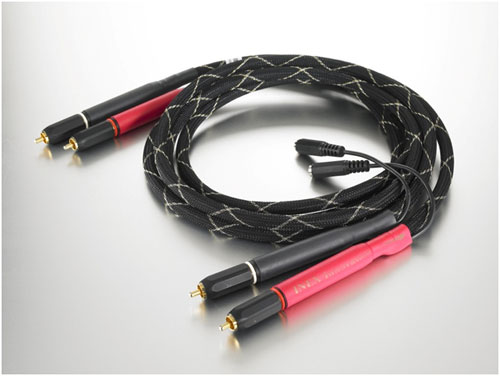
Since the fiber optic cables require power to operate I asked INEX for their best power cord and power supply technology that they have also improved to support the Generation III cables. Hence, they supplied me with their best i-Pure DC power supplies ($600) and 3D Creator Power Cords ($1200). The i-Pure DC power supplies have short cables on one end that plug into receptacles attached to the photonic interconnects. The power supplies feature special filtering technology that INEX has designed to work specifically with photonic cables to reduce noise and shield the cables from RF interference (RFI) and electromagnetic interference (EMI). As mentioned earlier, the photonic cables themselves are immune from RFI or EMI (unlike conventional interconnects), but they can be polluted by artifacts that come in via the power source, so careful attention to low noise power supply design, filtering and shielding is in order. Similarly, the 3D Creator power cords are themselves highly shielded and they include a metal cylinder (INEX calls it a tube, but I didn't want to use that term in an article for audiophiles lest there be a misunderstanding) in the center that features special noise filtering circuits. The description on the INEX Innovation web site says this about the cylinder in each power cord:
"This is different technology than common AC noise filter or AC power conditioner on the market. This Power Cord makes the overall music frequency response and sense of hearing becomes so much perfect [sic]. This power cord incorporates INEX i-Pure AC module, which uses amplitude discriminator to eliminate noise and crosstalk (small amplitude signal); only let [sic] pure AC power (big amplitude signal) pass."
If I understand this correctly it means they take the AC power coming in and split it into two paths based on amplitude. The large signal path (eg. 60Hz AC) is passed through directly. The small signal path is filtered. This reminds me of how the original Dolby noise reduction worked, although the filtering in Dolby was also frequency dependent.
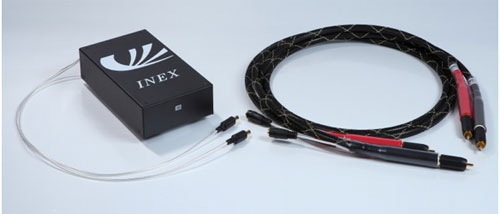
Because photonic cables are powered instead of passive like electronic interconnects it is critical to have the lowest possible noise in order to maximize the dynamic range capability of the cable. That is why the INEX photon cable for use between the preamp and power amp (Photon AMP III) is different than the one for use between the source component and the preamp (Photon Link III). Because the signal levels are different in these two locations the photonic links are slightly different to optimize the performance. INEX can further tailor the links according to your system needs. For example, my CD player (E.A.R. Acute III) has a maximum output level of 5V compared to most players that have a maximum of 2V or so. INEX can tailor the cable to accommodate this difference. As it turned out INEX gave me a cable suitable for 2.5 Vrms output but I never heard any artifacts that might indicate an overdrive while listening to CDs during my evaluations even with the E.A.R. volume control cranked ¾ of the way up.
This is the same reason why INEX does not currently manufacture a photonic cable for turntables. It is because the signal levels are so low from almost all phono cartridges (even a moving magnet one) that the resulting cable would not have enough dynamic range to be useable. It would be interesting if one day INEX were to build a tiny phono preamp right into the body of the RCA connector with an output suitable for one of its cables. This would eliminate the interconnect cable as a variable in the performance of phono cartridges and is technologically feasible.
Next, let me talk about the setup I used to evaluate the sound of the INEX cables. First, I disconnected all of interconnects and power cords in my system except for the speaker cables running between my E.A.R. 890 amplifier and Marten Django XL speakers. I then inserted a pair of Photon AMP III cables between my preamp (E.A.R. 868) and amp and plugged in the supplied i-Pure power supply at the preamp side of the photonic cable (one power supply services a pair of cables). I also used a 3D Creator power cord to power the E.A.R. amp. The i-Pure power supply comes with its own ordinary power cord that I used. I did try using the 3D Creator power cord on the i-Pure power supply with my reference power cord on the amp, but I thought the sound was better using the 3D Creator power cord directly on the amplifier. I guess this means the filtering and other electronics within the i-Pure power supply is sufficient on its own to work magic with the photonic cables. It also means the 3D Creator power cord does a terrific job and I'll talk more about that later.
The next step was to insert a pair of Photon Link III cables between the E.A.R. Acute III CD/DAC analog outputs and the preamp together with a second i-Pure power supply. I also used a 3D Creator power cord to power the CD player. I used one more 3D Creator power cord to power the preamp. With no more cables plugged into the system I listened to many hours of CDs with this set up and I'll talk about the results below.
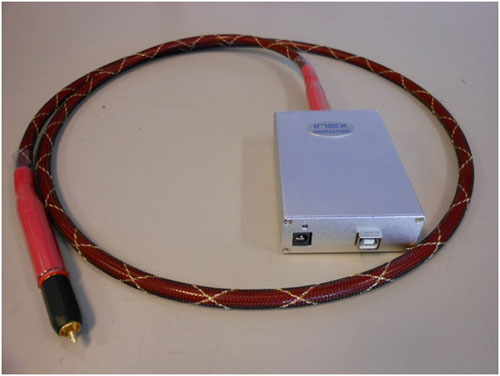
INEX also sent me their Photon USB 2 cable with attached Asynchronous USB-to-SPDIF converter box and their Digital III Photon cable to connect to my DAC. Each of these comes with its own wall wart power supply. Although I had another i-Pure Power Supply capable of powering two devices I ended up using the wall wart power supplies for these cables because of the way my components are arranged.
I attached the Photon USB 2 cable to my Mac Mini music server and the Digital III cable between the Photon USB 2 box and the SPDIF input on my E.A.R. Acute 3. INEX supplies a data CD with drivers for a PC (not needed for the Mac) and some instructions for setting up JRiver player software to use with its equipment. INEX can help you if necessary if you use other player software, but I do use JRiver for the Mac. Despite the provided instructions I could not get downloaded music to play through the E.A.R., I only got noise. This has happened to me before when using the SPDIF input on the E.A.R. so I suspected the problem was there. I gave it the old college try by going through all the settings I could find on JRiver but was finally forced to give up. Fortunately, I was able to arrange to borrow a Mytek DAC for this review. When I switched cables over to the Mytek from the E.A.R. I got things to play on the first try. The downside of this is that I am not familiar with the sound of the Mytek in my system using conventional cables, and I lost the capability to easily compare CDs played through the analog photonic cables with digital download equivalents played through the digital photonic cables.
I should note that a significant portion of my listening was to vinyl LPs. Some of the most significant conclusions I report on below are based on the sound of vinyl as heard through the INEX cables. As already mentioned INEX does not have a phono interconnect so I continued to use the Wywires Silver cable that is part of my reference system for vinyl. The INEX AMP III photonic cable was in circuit for these evaluations. I also switched the power cord on my turntable from the Kubala-Sosna Emotion cord to the INEX 3D Creator power cord.
I want to reiterate something I said during my review of the INEX Linestage and Preamp back in Issue 68 where the second generation of INEX cables was used. Photonic cables are active components and not passive as are conventional interconnect cables. Not only do they require break-in like most cables they also must reach a stable operating temperature by being left powered for several hours before listening. Photonic components such as laser diodes and photodetectors are quite temperature sensitive. Mitch Ko from INEX recommends that the cables be powered up at least 3 to 4 hours before listening, but I would recommend at least 24 hours. They draw almost no current so it should not be a problem for most users to just leave the power supplies turned on. The 3D Creator power cords also contain active electronic components and should be kept plugged in to an active AC outlet to yield the best performance.
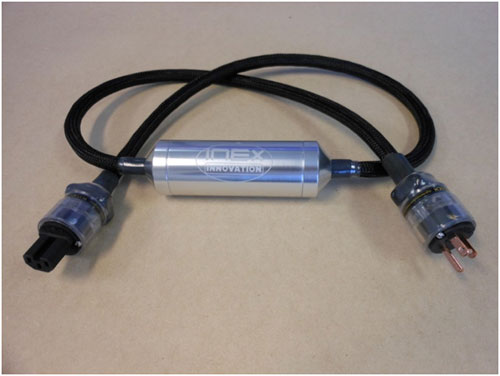
Listening Evaluations
The sound of music through the photonic interconnect cables is positively magnificent and possibly ground-breaking! After many hours of listening I became convinced that I was hearing the best sound my E.A.R. electronics was capable of, limited only by the speakers. The sound was smoother, clearer, more rhythmic and nuanced and more extended than I have ever heard before out of my system. Tonally these cables allowed my stereo system to perform with utmost transparency and cleanness from top to bottom. There was no tell whether the electronics were tubed or solid-state. I immediately noticed an improvement in bottom end definition and tunefulness. I should caution that my speakers in my room produce very little of anything below about 32Hz, however, these cables brought a new sense of both power and speed to the bottom octaves. At the same time they did nothing to ameliorate the room modes excited by the speakers that do various types of harm to the music depending upon the nature of the recording. Overall I have to give the photonic cables, combined with the 3D Creator power cords, an A+ for their low-end performance.
Similarly the performance at the extreme high end of the spectrum was also exemplary. The words pristine and pure come to mind. I've never heard a better high-end response through my speakers than I heard with these photonic cables. As music ran up the scale it seemed to become more transparent and clean with acres of air around the instruments. This performance made the midrange sound better as well, since the harmonic structure of voices and instruments were perfectly reproduced. At the same time the cables revealed some of the limitations of the electronics and of the ceramic tweeter in the Marten speakers. At times I heard a little hardness and image constriction at the top end that I know is not on the recording. The E.A.R. electronics I own are terrific and very hard to beat at anything near the same price, but the design is quite old and some better electronic components are now available. As I go to audio shows and review newer equipment I'm beginning to hear some things that sound slightly better. Similarly the Marten tweeter is bettered in some of Marten's more expensive models as well as those of other companies. The INEX cables, while revealing the best the equipment can do, also revealed things it can't do. The presentation, especially at the high end, is just completely honest. I believe the complete banishment of EMI and RFI, as provided by the INEX cables, is responsible for the purity and transparency I heard.
Above a certain price point, most cables to a good job in the midrange. The INEX cables are no exception. This most important part of the spectrum is thoroughly involving and beautiful through the photonic cables. Whether the music was bold and blustery or tender and sweet the essence of the musical performance always came through distinctly. I think where one cable excels over another in the midrange has much to do with how well it maintains the correct harmonic structure of the music, and here the INEX cables did a very good job. I did note, and so did some visitors who came by while the INEX cables were under test, that the upper bass and lower midrange seemed a little thinner than I am used to from my system. After some experimentation I have concluded that this has mostly to do with speaker placement rather than cable performance. That is, I could improve the upper bass some by adjusting speaker spacing and toe-in. I believe my reference cables were helping out in this area while the INEX cables are more nearly flat.
However, the most important advancement I found from the Generation III INEX photonic cables was in the way they rendered spatial images compared to earlier versions and also compared to most other cables at similar or even higher prices. With the INEX cables in my system I heard an astonishing broad and deep and stable soundstage whose character changed noticeably from recording to recording as it should. The overall presentation was slightly more recessed and natural than with my reference cables. On some recordings sounds and instruments appeared significantly deeper in the soundstage than I've heard before and also further towards the edges of the room. I also appreciated that low level details and very quiet sounds were also reproduced in their own distinct places in the stereo soundscape. Musical instruments and voices seemed to have distinct space around them. As I listened with the INEX cables in my system I was constantly surprised by the amount of information I was hearing in the spatial domain. The photonically-wired system was also great at retrieving ambiance information and reverberation. I believe all this is possible due to the low noise performance (helped by the 3D Creator power cords) and the lack of electrical artifacts present in most systems wired conventionally.
So far most of the comments I have made pertain to the performance of the photonic analog interconnects, the AMP III and Link III. I also received for review the cables to go between my Mac Mini acting as music server and my DAC. As mentioned earlier I was forced to borrow a Mytek DAC for the review. Most of the comments I made above about the sound as heard through the INEX analog cables are also relevant to the playback of digital music files. I played many downloads of jazz, various vocals and a few classical pieces through the INEX USB 2 and Digital III cable and they all sounded terrific, especially the high-resolution files. I find it difficult to write specifics about the sound because the DAC was unfamiliar to me. For a more comprehensive review of the USB 2 please check out Roger Gordon's review in PF.
I did not spend much time separately evaluating the 3D Creator Power Cords. To tell you the truth, the system was sounding so good I didn't want to spoil anything by changing power cords. I'm sure they contributed to the low noise performance of the system that so impressed me. I did perform two brief comparisons. Using the E.A.R. Acute 3 CD/DAC I went back and forth between the 3D Creator cord and the Kubala-Sosna Emotion cord. CDs played on the E.A.R. were subtly cleaner with more detail when using the INEX power cord. Otherwise I could not hear a difference. I know from experience that the E.A.R. benefits from a good power cord and both of these are excellent. I also tried the INEX power cord on my Townshend Rock 7 turntable, which, for some reason, is very sensitive to the power cord it is used with. It took me quite a while before I settled on using the Kubala-Sosna Emotion power cord on this excellent player. Substituting the 3D Creator power cord seemed to make some recordings a little brighter but it was hard to tell whether the sound was better or more accurate or not. A toss up. However, compared to some other power cords I had in house, even some more expensive, the 3D Creator power cord was superior in many ways.
My overall conclusion on the 3D Creator power cords is that the noise reduction technology they use is an important advancement that flows through and enhances the entire audio system. I believe they contribute most if they are used on source components but their effect can be heard anywhere they are used in the system. They are not hugely expensive compared to other cables on the market today and they provide tremendous value.
Overall Conclusions
INEX Innovation has been producing photonic audio cables, power cords and other components for over 10 years but they are not well known yet. The company is run by engineers who are dedicated audiophiles but without much marketing experience. In the past they used the Harmonic Technology company to market and distribute their products, but now they want to step out under their own name. They have a set of winning products in the photonic cables under review here. Using photonics technology for interconnects is a brilliant idea that works and the engineering that has gone into developing these interconnects is amazing. It is a revelation to hear the sound of your components without the detrimental effects imposed by conventional electronic cables. INEX Innovation is selling their cables primarily through direct sales over the internet and this keeps the cost down. I notice they are offering to upgrade earlier generations of their photonic cables to the latest designs, so if you purchased these cables before I would encourage you to get them upgraded. I believe photonics offers even more to the world of audio so I hope these guys can keep going. A great, great effort. Bravo! Michael Wechsberg
INEX Photon AMP III Audio Cable: $2000/pair
INEX Photon Link III Audio Cable: $2000/pair
INEX Photon Digital Cable: $988
INEX Photon USB2 Cable and Converter: $1188
INEX iPure DC Power Supply: $600
INEX iPure AC Power Cord: $1200
INEX Innovation
428 McCormick Street
San Leandro, CA 94577‑1005
(510) 567‑8503
[email protected]
www.inexinnovation.com





